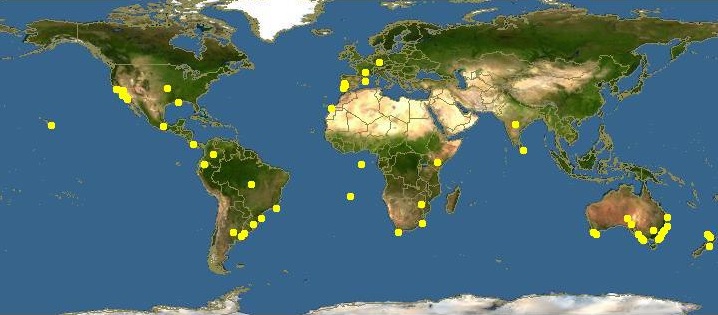Acacia longifolia
Contents
General Plant Info
Acacia longifolia is a species of Acacia native to southeastern Australia, from the extreme southeast of Queensland, eastern New South Wales, eastern and southern Victoria, and southeastern South Australia. Common names for it include Long-leaved wattle, Acacia Trinervis, Aroma Doble, Golden Wattle, Coast Wattle, Sallow Wattle and Sydney Golden Wattle. It is not listed as being a threatened species,and is considered invasive in Portugal and South Africa.It is a tree that grows very quickly reaching 7–10 m in five to six years.
Consists of 3 subspecies:
Acacia longifolia subsp. longifolia
Acacia longifolia subsp. sophorae
Acacia longifolia subsp. sophorae x oxycedrus
Geographic distribution
Identification
Phyllodes are 50-250 mm long and 10-35 mm wide and each face has 2-4 prominent longitudinal veins. 2-10 mm from the base of the phyllode is one small gland. The yellow flower heads are cylindric in shape, 20-50 mm in length and occur in pairs or singly in the phyllode axils. The seed pods are 50-150 mm long and 3-10 mm wide, thick and usually straight to slightly curved. The seed are brown-black and shiny. 4-10 seeds per pod.
Identification
Alkaloid content
0.2% tryptamine in bark, leaves, some in flowers, phenylethylamine in flowers[1][2] DMT in plant (Lyceaum), but trout claims reports are in error due to methodology. Daniel Siebert found trace amounts of DMT in aerial parts in CA but did not publish information[3]
- Var sophorae: 0.6%DMT,5meoDMT,Tryptamine,Bufotenine,Gramine ,Cinnamoylhistamine, n-dec-3enoylhistamine[4], some strains very little alkaloids
Other uses
Acacia longifolia is widely cultivated in subtropical regions of the world. Its uses include prevention of soil erosion, food (flowers, seeds and seed pods), yellow dye (from the flowers), green dye (pods) and wood. The flower colour derives from the organic compound kaempferol. The tree's bark has limited use in tanning, primarily for sheepskin. It is useful for securing uninhabited sand in coastal areas, primarily where there are not too many hard frosts.
